LAB REPORT
Science and Technology Making Headlines
May 3, 2019

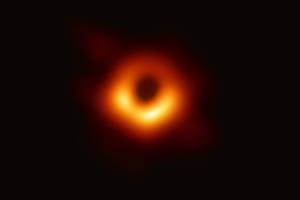
The first image of a black hole from the galaxy Messier 87. Credit: Event Horizon Telescope Collaboration via National Science Foundation
Behind the black hole
In a news conference in April, a team of scientists unveiled the first image of a black hole — a dark circular void surrounded by flares of orange and yellow. "We have seen what we thought was unseeable," they said. "We have seen and taken a picture of a black hole."
Some prominent skeptics weren't so sure. George Chapline, a physicist at Lawrence Livermore National Laboratory, says it's "way premature" for the team to claim it "saw" a black hole. Nevertheless, he said the team's findings seem both solid and significant. "The technical accomplishment was quite amazing."
In science, "not everyone needs to be convinced," said Sheperd Doeleman, the team leader. "I fully expect there could be questions asked and points raised — and we welcome that." As far as he's concerned, "I'm more certain about this than just about anything." He considers the image "the biggest return on an investment in the history of astronomy."

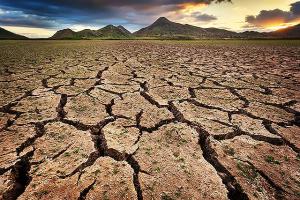
Lawrence Livermore scientists and collaborators found that human influence on droughts dates back 100 years.
Fingerprinting climate change
While scientists have known that rising temperatures and the effects of climate change date back to the very early 20th century, researchers from Lawrence Livermore and the Goddard Space Sciences Institute revealed in a report earlier this week that the fingerprint of climate change on drought and the long-term effect on global water supplies can be traced to 1900.
Scientists studied computer models in conjunction with long-term observations to analyze what scientists call the hydroclimate, finding that widespread changes in water levels have been under way across the world for some time.
The researchers looked at both precipitation and soil moisture levels, using tree rings going back 600 to 900 years to estimate soil moisture trends before human-produced greenhouse gases started rising. They compared this data with 20th century tree rings and modern instrumental observations.

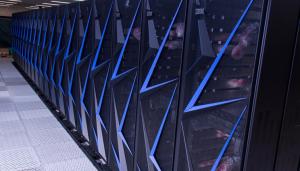
Lawrence Livermore National Laboratory’s newest supercomputer, Sierra, is used for stockpile stewardship.
Machine learning to the rescue
Artificial intelligence tools are revolutionizing scientific research and changing the needs of high-performance computing.
“For the last several decades, the work that we've been doing inside Lawrence Livermore National Lab has been exploiting the relationship between simulation and experiments to build what we call predictive codes,” said Fred Streitz, LLNL’s chief computational scientist and director of the high-performance computing innovation center.
“We think we know how to do research in the physics space, that is, we write down the equations, solve them and work closely with experimentalists to validate the data that goes into the equations, and eventually build a framework that allows us to run a simulation that allows us to believe the result. That’s actually fundamental to us - to run a simulation that we believe.”
Now, however, a new tool has reached maturity, one that may further broaden the horizons of scientific discovery.
“On on top of experiments and simulation, we're adding a third component to the way we look at our life, and that is with machine learning and data analytics,” Streitz said.

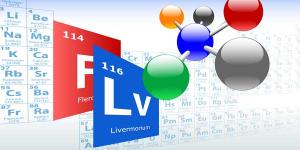
Livermorium (116) and Flerovium (114) are the most recent heavy elements that LLNL and Russian scientists discovered.
It’s elemental
Inspired by a recent periodic table-themed pub trivia event, sponsored by Chemistry & Engineering News and the American Chemical Society on Campus, a radio program dubbed “Stereo Chemistry,” explored the stories behind isolating some of the heaviest elements known.
Element 115, as well as 118, came out of a long-term collaboration between scientists in Russia and those at Lawrence Livermore National Laboratory. During the course of those experiments, rotating teams of scientists from Livermore would travel to the lab in Dubna, where the monthslong experiments took place. Although these 21st-century scientists had the benefit of advanced equipment and new techniques, a key aspect of this work had not changed since the late ’60s.
LLNL’s Mark Stoyer was one of the team members. “Basically you’re sitting there for 100 days throwing as many calcium nuclei at as many — in this case it was plutonium nuclei — that you can put into a target for as long as you can in the hopes that you’ll get two to combine together and stick together and be able to then be detected in your detector system, and the probability for that occurring is just extremely low.
“The people that work in this field, you know, I guess we’re used to frustration. You know, you do these long experiments and you may or may not see something.”

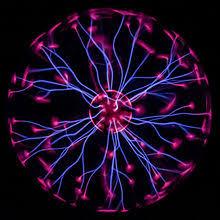
Plasma is thought to be the fourth state of matter.
Can you see the light
Lawrence Livermore researchers and collaborators have devised a new method to capture energy flow in plasma by measuring scattered light.
Whether studying the core of the sun or the inside of a fusion reactor, scientists need to determine how energy flows in plasma. Scientists use simulations to calculate the flow. The simulations rely on the classical thermal transport model. Despite more than 50 years of research, an ad hoc multiplier is often required. Without it, the simulation doesn't match real-world observations. Now, a team devised a way to measure energy flow and determined why the models need the multiplier. The team's new approach lets them quantitatively test simulations.
The team's measurements show that the most sophisticated models over-predict the heat flux for all conditions tested. Now, researchers can further develop thermal transport models and can more readily study and definitively test models.





